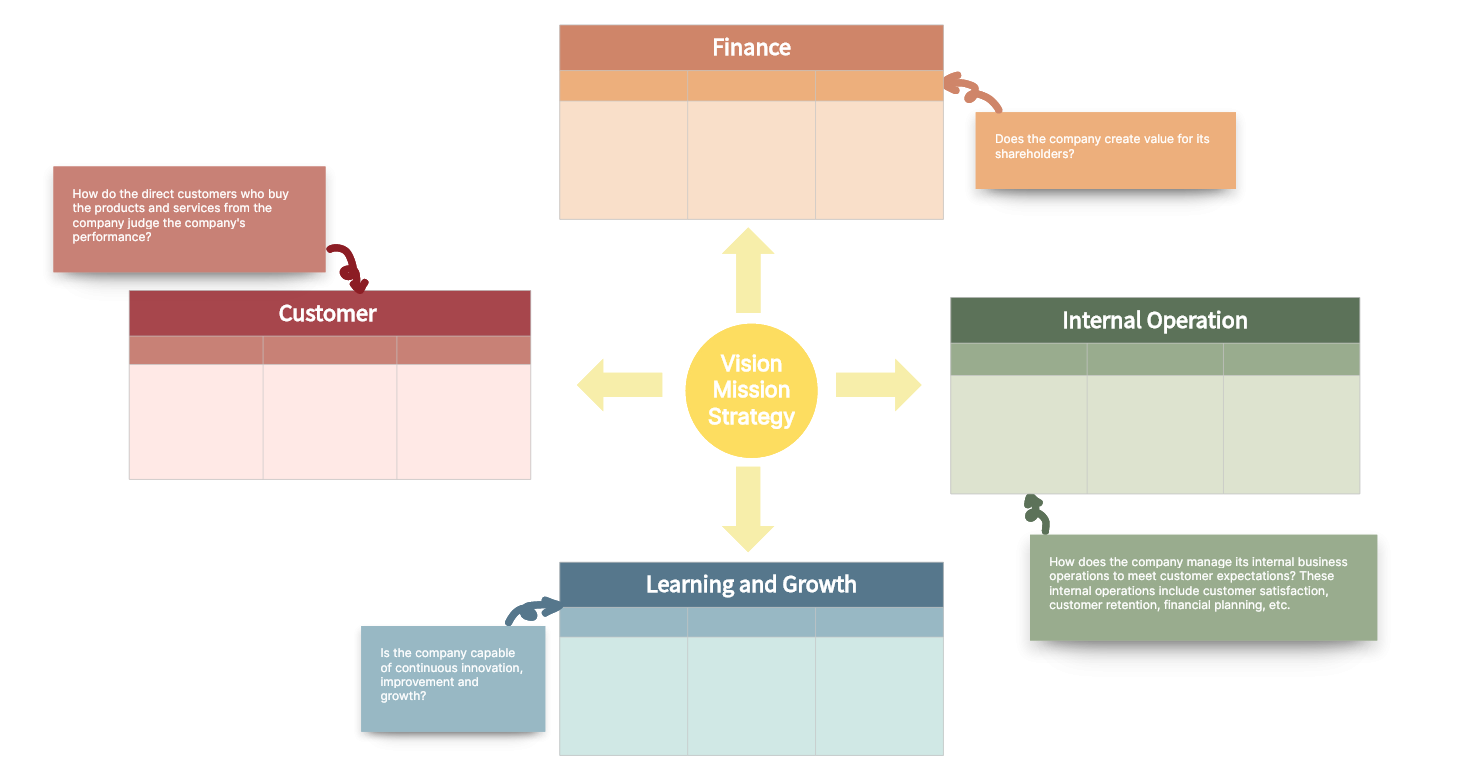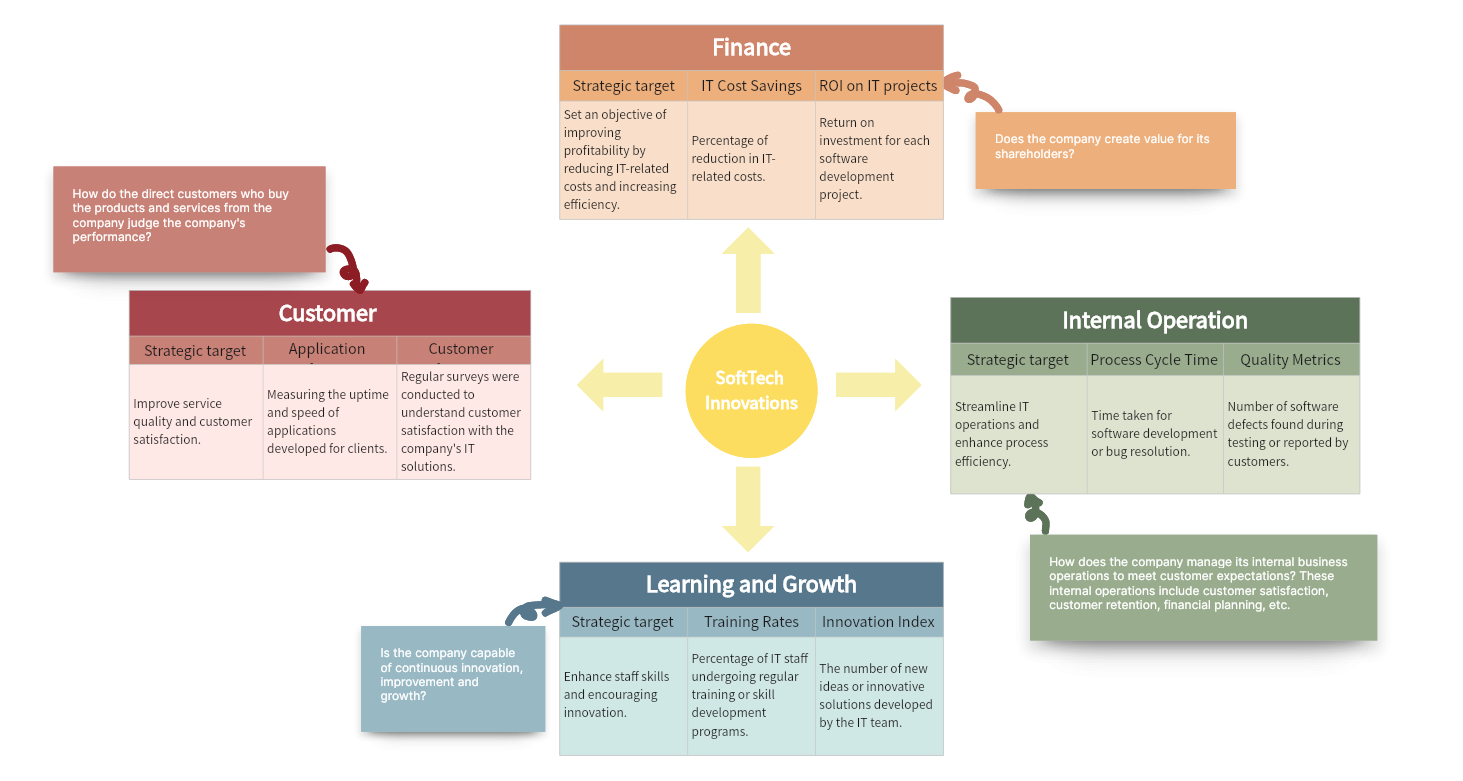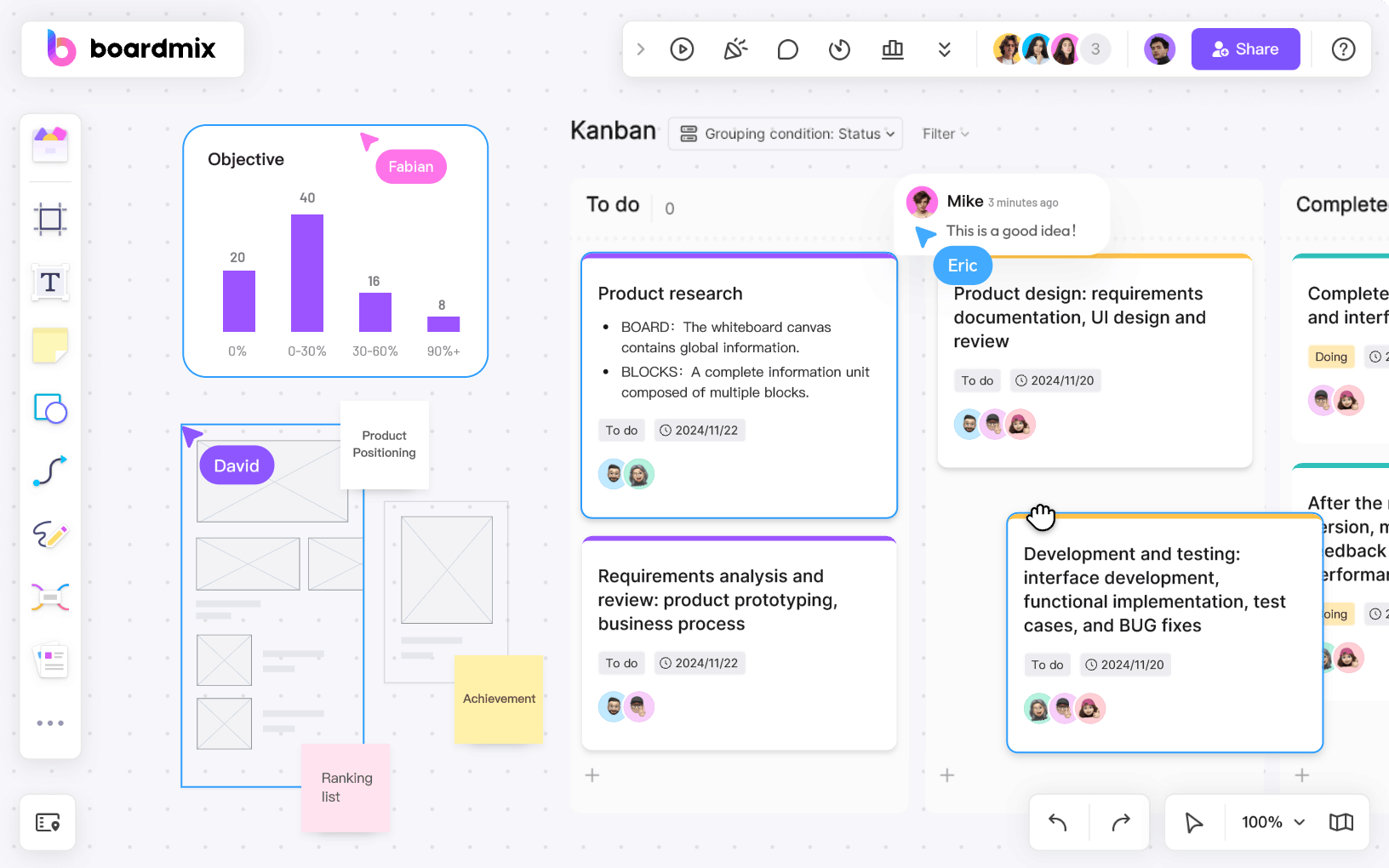In this era of digital transformation, Information Technology (IT) plays a critical role in shaping businesses. To maximize the effectiveness, organizations need performance management tools, such as the IT Balanced Scorecard. This article explores everything you need to know about IT Balanced Scorecard. Keep reading.
What Is the Balanced Scorecard in Information Technology
A Balanced Scorecard in Information Technology is a strategic planning and performance management system that aligns IT operations with overall business strategy. It provides a balanced view of IT performance by looking beyond traditional IT metrics.

The IT Balanced Scorecard incorporates four key perspectives, each with its set of objectives and measures:
- Financial: This measures the direct economic contribution of IT operations, such as cost-efficiency, cost-savings from automation, or Return on Investment (ROI) on IT projects.
- Customer: This focuses on service delivery to internal or external customers. It includes measures like system uptime, application performance, helpdesk resolution times, and customer satisfaction scores.
- Internal Process: This assesses the efficiency of IT processes, such as software development, network management, and IT support. Measures may include process cycle times, quality metrics, or security incident rates.
- Learning and Growth: This evaluates the organization's ability to adapt and improve, through measures like staff skill levels, training rates, knowledge management effectiveness, or innovation in IT solutions.
Why Is a Balanced Scorecard Important in Information Technology
The importance of a Balanced Scorecard in IT stems from several key benefits it offers:
- Alignment with Business Strategy: It ensures that IT initiatives align with business goals and contribute to strategic objectives. This increases the perceived value of IT within the organization and helps secure necessary resources.
- Improved Performance Measurement: By using a mix of financial and non-financial measures, the Balanced Scorecard provides a more complete and accurate picture of IT performance.
- Increased Focus on Customers: By including a customer perspective, it highlights the importance of service quality and customer satisfaction in IT operations.
- Enhanced Communication: The Balanced Scorecard can serve as a communication tool that clarifies strategic goals and expectations to the IT team and the wider organization.
- Continual Learning and Improvement: The learning and growth perspective encourages continual development and innovation, essential for staying relevant in a rapidly changing tech landscape.
In conclusion, a Balanced Scorecard in Information Technology provides an effective means to manage and improve IT performance, by aligning activities with strategic objectives and incorporating a diverse range of performance measures. Its implementation can significantly enhance the value delivered by IT to an organization.
IT Balanced Scorecard in Practice - A Specific Example
The implementation of the IT Balanced Scorecard is a powerful step towards aligning IT operations with business objectives. To illustrate its practical application, let's explore a specific example involving a fictitious software development company named "SoftTech Innovations."

Background and Context
SoftTech Innovations is a medium-sized organization offering a range of software solutions to its clients. The company aimed to improve the performance of its IT department and ensure alignment with its strategic goals, such as boosting profitability, enhancing customer satisfaction, improving internal processes, and promoting continual learning and growth.
Implementing the IT Balanced Scorecard
SoftTech decided to apply the Balanced Scorecard approach within its IT department, which led to the following actions:
Financial Perspective
The company set an objective of improving profitability by reducing IT-related costs and increasing efficiency. They tracked metrics such as:
- IT Cost Savings: Percentage of reduction in IT-related costs.
- ROI on IT projects: Return on investment for each software development project.
Customer Perspective
SoftTech aimed to improve service quality and customer satisfaction. The metrics included:
- Application Performance: Measuring the uptime and speed of applications developed for clients.
- Customer Satisfaction Score: Regular surveys were conducted to understand customer satisfaction with the company's IT solutions.
Internal Process Perspective
The company sought to streamline IT operations and enhance process efficiency. They tracked metrics like:
- Process Cycle Time: Time taken for software development or bug resolution.
- Quality Metrics: Number of software defects found during testing or reported by customers.
Learning and Growth Perspective
SoftTech focused on enhancing staff skills and encouraging innovation. They tracked metrics such as:
- Training Rates: Percentage of IT staff undergoing regular training or skill development programs.
- Innovation Index: The number of new ideas or innovative solutions developed by the IT team.
Outcome and Insights
After implementing the Balanced Scorecard, SoftTech's management reported increased alignment between the IT department and overall company strategy. The clear communication of objectives led to better focus and motivation among the IT team. Enhanced performance measures provided invaluable insights into areas of strength and those requiring improvement. As a result, the company saw a decrease in IT costs, improved customer satisfaction scores, more efficient processes, and a marked increase in innovation within the IT department.
This example underscores the power of the IT Balanced Scorecard in driving strategic alignment, enhancing performance measurement, and fostering continual improvement within IT operations.
Boardmix IT Balanced Scorecard Template for Optimal Performance Measurement
Performance measurement in Information Technology (IT) is more than just assessing basic metrics. It’s about aligning IT objectives with the organization’s strategic goals. The Boardmix IT Balanced Scorecard Template can streamline this process. Let’s take a look at it.

What Is the Boardmix IT Balanced Scorecard Template
The Boardmix IT Balanced Scorecard Template is a strategic tool that allows organizations to plan, track, and improve their IT performance. It leverages the principles of the Balanced Scorecard, offering a comprehensive approach that covers financial, customer, internal process, and learning and growth perspectives.
Features of Boardmix IT Balanced Scorecard Template
The Boardmix IT Balanced Scorecard Template stands out because of its unique features:
- Customizable Metrics: The template allows organizations to insert their unique KPIs, making the scorecard tailored to specific needs.
- User-friendly Interface: The design is intuitive, allowing for ease of use even for individuals without advanced technical skills.
- Scalability: Whether for small businesses or large corporations, the Boardmix IT Balanced Scorecard Template scales to fit your organization's size and needs.
Why Choose Boardmix IT Balanced Scorecard Template
Employing the Boardmix IT Balanced Scorecard Template provides several benefits:
- Enhanced Alignment: The template fosters alignment between IT operations and business strategies.
- Better Performance Measurement: With a focus on different perspectives, organizations get a more rounded view of their IT performance.
- Facilitated Communication: Visual representation of strategy aids in clear communication of objectives and expectations.
To sum up, the Boardmix IT Balanced Scorecard Template provides a robust framework that guides IT departments towards increased efficiency and strategic alignment with organizational goals. Just try it out now!








